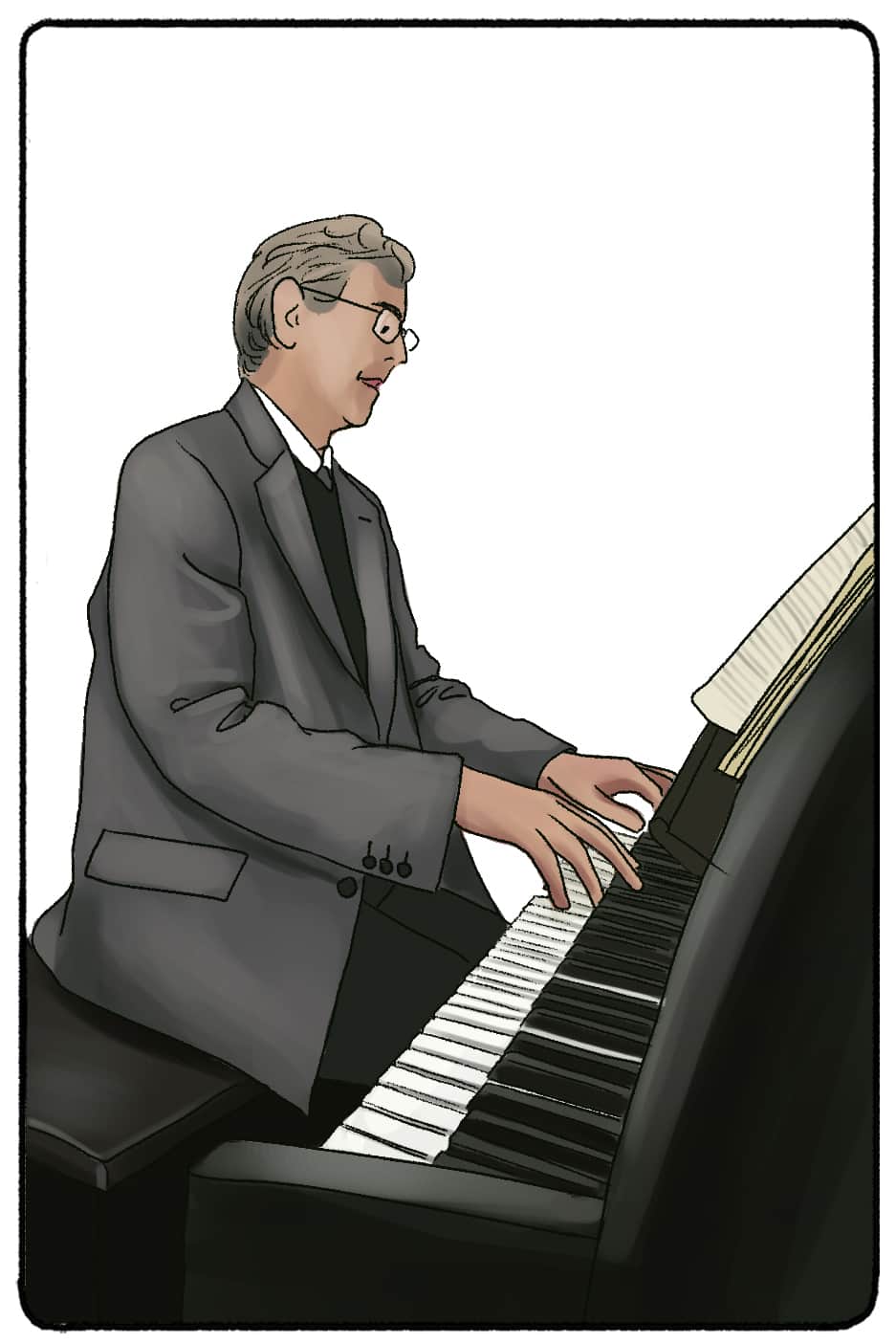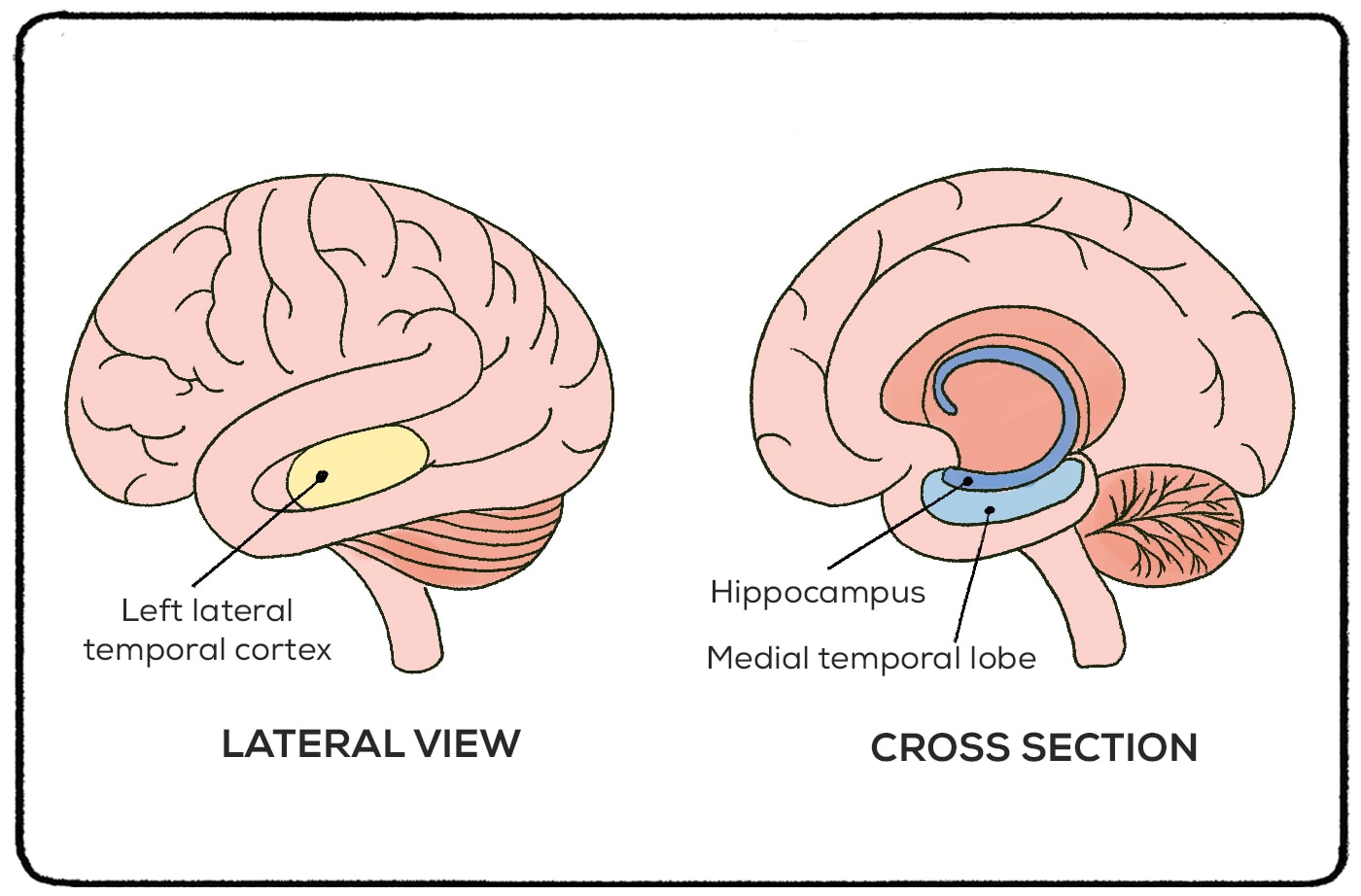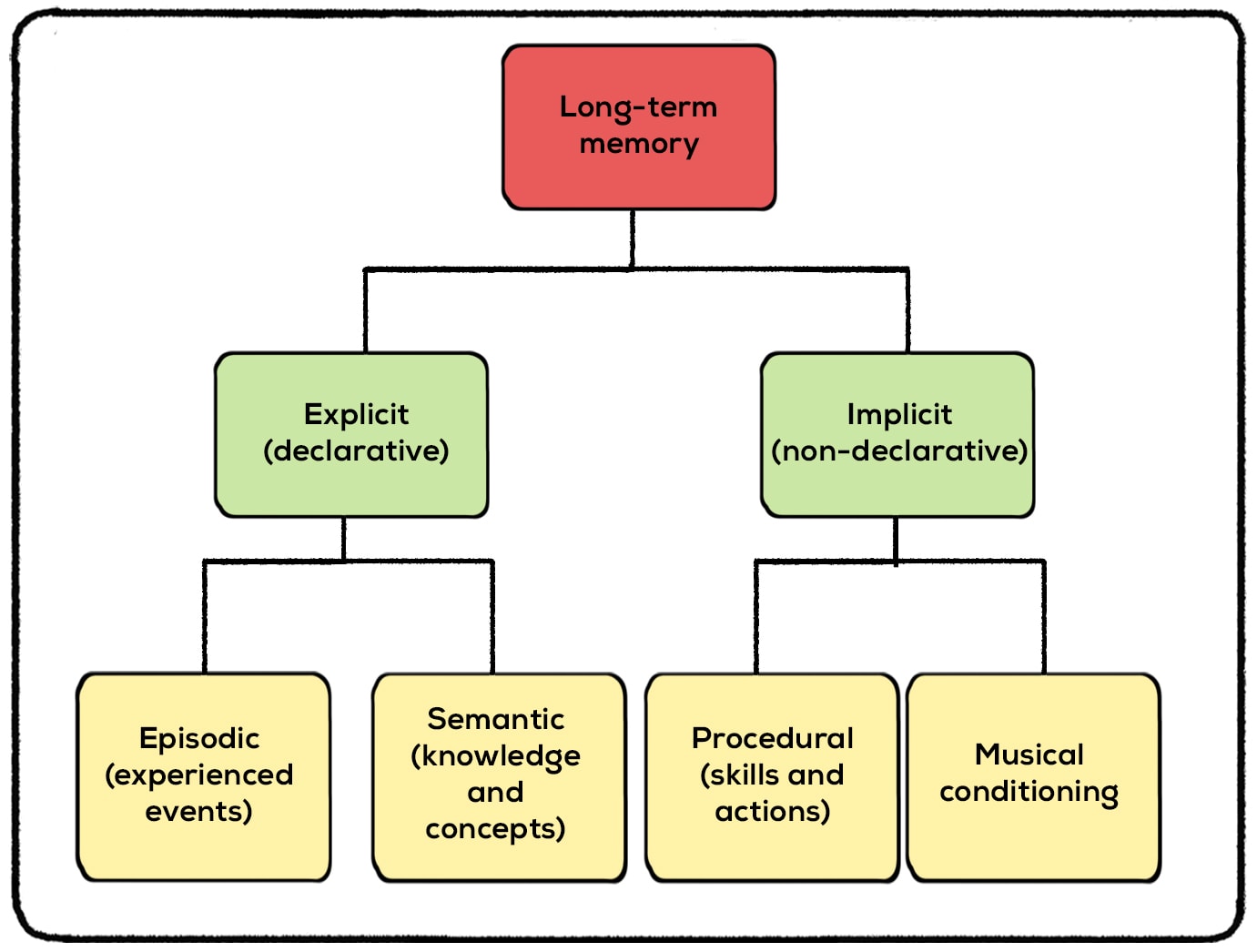Imagine waking up every day without remembering anything from your past and then immediately forgetting that you woke up at all. This life without memories is the reality for British musician Clive Wearing who suffers from one of the most severe case of amnesia ever known.

Who is Clive Wearing?
Clive Wearing was born on 11 May 1938. He was an accomplished musicologist, keyboardist, conductor, music producer, and professional tenor at the Westminster Cathedral. When on 27 March 1985 he contracted a virus that attacked his central nervous system resulting in a brain infection, Clive’s life was changed forever.
The rare neurological condition called herpes encephalitis caused profound and irreparable damage to Clive’s hippocampus. The hippocampus is a part of the brain that plays an important role in consolidating short-term memory into long-term memory. It is essential for recalling facts and remembering how, where, and when an event happened.
Clive’s hippocampus and medial temporal lobes where it is located were ravaged by the disease. As a consequence, he was left with both anterograde amnesia, the inability to make or keep memories, and retrograde amnesia, the loss of past memories. Most patients suffer one or the other, so it's notable that Clive suffered both.

Clive Wearing and Dual Retrograde-Anterograde Amnesia
Clive’s rare dual retrograde-anterograde amnesia, also known as global or total amnesia, is one of the most extreme cases of memory loss ever recorded. In psychology, the phenomenon is often referred to as "30-second Clive" in reference to Clive Wearing’s case.
Anterograde amnesia
Anterograde amnesia is the loss of the possibility to make new memories after the event that caused the condition, such as an injury or illness. People with anterograde amnesia don’t recall their recent past and are not able to retain any new information. (If you have ever seen the movie 50 First Dates, you might be familiar with this type of condition.)
The duration of Clive’s short-term memory is anywhere between 7 seconds and 30 seconds. He can’t remember what he was doing only a few minutes earlier nor recognize people he had just seen. By the time he gets to the end of a sentence, Clive may have already forgotten what he was talking about. It is impossible for him to watch a movie or read a book since he can’t remember any sentences before the last one.
Because he has no memory of any previous events, Clive constantly thinks that he has just awoken from a coma. In a way, his consciousness is rebooted every 30 seconds. It restarts as soon as the time span of his short-term memory has elapsed.
Retrograde amnesia
Retrograde amnesia is a loss of memory of events that occurred before its onset. Retrograde amnesia is usually gradual and recent memories are more likely to be lost than the older ones.
Due to his severe case of retrograde amnesia, however, Clive doesn’t remember anything that has happened in his entire life. He completely lacks the episodic or autobiographical memory, the memory of his personal experience.
But although he can’t remember them, Clive does know that certain events have occurred in his life. He is aware, for example, that he has children from a previous marriage, even though he doesn’t remember their names or any other detail about them. He knows that he used to be a musician, yet he has no recollection of any part of his career.
Clive also knows that he has a wife. In fact, his second wife Deborah is the only person he recognizes. Whenever Deborah enters the room, Clive greets her with great joy and affection. He has no episodic memories of Deborah, and no memory of their life together. For him, each meeting with her is the first one. But he knows that she is his wife and that he is happy to see her. His memory of emotions associated with Deborah provokes his reactions even in the absence of the episodic memory.
In spite of his complex amnesia, Clive still has some types of memories that remain intact, including semantic and procedural memory.
Clive Wearing’s Semantic and Procedural Memories
Clive Wearing’s example shows that memory is not as simple as we might think. Although the physical location of memory remains largely unknown, scientists believe that different types of memories are stored in neural networks in various parts of the brain.
Semantic memory
Semantic memory is our general factual knowledge, like knowing the capital of France, or the months of the year. Studies show that retrieving episodic and semantic memories activate different areas of the brain. Despite his amnesia, therefore, Clive still has much of his semantic memory and retains his humor and intelligence.

Procedural memory
Clive may not have any episodic memories of his life before the illness, but he has a largely unimpaired procedural memory and some residual learning capacity.
Procedural or muscle memory is remembering how to perform everyday actions like tying shoelaces, writing, or using a knife and fork. People can retain procedural memories even after they have forgotten being taught how to do them. This is why Clive’s procedure memory including language abilities and performing motor tasks that he learned prior to his brain damage are unchanged.
Using procedural memory, Clive can learn new skills and facts through repetition. If he hears a piece of information repeated over and over again, he can eventually retain it although he doesn’t know when or where he had heard it.
While episodic memory is mainly encoded in the hippocampus, the encoding of the procedural memory takes place in different brain areas and in particular the cerebellum, which in Clive’s case has not been damaged.
Musical memory
What’s more, Clive’s musical memory has been perfectly preserved even decades after the onset of his amnesia. In fact, people who suffer from amnesia often have exceptional musical memories. Research shows that these memories are stored in a part of the brain separate from the regions involved in long-term memory.
That’s why Clive is capable of reading music, playing complex piano and organ pieces, and even conducting a choir. But just minutes after the performance, he has no more recollection of ever having played an instrument or having any musical knowledge at all.
Is Clive Wearing Still Alive?
Yes! Clive Wearing is in his early 80s and lives in a residential care facility. Recent reports show that he continues to approve. He renewed his vows with his wife in 2002, and his wife wrote a memoir about her experiences with him.
You can take a look at Clive Wearing's diary entry, as well as access a documentary on him, by checking out this Reddit post.
Not Just Clive Wearing: Other Cases of Amnesia
Clive Wearing is one of the most famous patients with amnesia, but he is far from the only one. Amnesia can affect people temporarily or permanently, and it doesn’t discriminate. Famous authors, former NFL players, and just regular people going to the dentist may deal with a bout of amnesia at one point in their lives. And some of these stories are so stranger than fiction that they are doubted by medical professionals and the general public!
H.M.
Neuroscientists have been carefully studying amnesia since the 1950s. One of their first notable patients was a man named Henry Molaison, or “H.M.” H.M. suffered amnesia after having surgery at the age of 27. H.M. forgot things almost as soon as they took place. His condition was the subject of studies for decades until he died in 2008. Many scientists still refer to his case when discussing amnesia and other memory disorders.
Scott Bolzan
Imagine waking up one day in the hospital with little to no memories of your life. You’re 47, the woman by your bedside is telling you that you have been married for 25 years. The terms “marriage” and “wife” don’t even register in your brain! As your family tells you about your life, you learn that you spent two years playing in the NFL, have two teenage children, and have decades of memories that just aren’t accessible. This is what happened to Scott Bolzan.
Scott Bolzan developed retrograde amnesia after a simple slip and fall. Little to no blood flow and damaged brain cells in the right temporal lobe erased many of Bolzan’s long-term memories. He knew basic skills, like eating with utensils, but memories of people and events completely disappeared. His case is one of the most severe cases of retrograde amnesia in history, but even his story is doubted by some neurologists. Since his fall, he has written a book about his memory loss and is now a motivational speaker.
Agatha Christie
The story of Agatha Christie’s amnesia is largely buried under her other accomplishments. She’s one of the world’s best-selling authors (only outsold by the Bible and Shakespeare!) Her brain was always in use as she wrote 66 detective novels, but before that, she may have suffered great memory loss. Did she have total amnesia? The jury is actually out on that. I’ll explain why.
Christie found out that her husband was cheating on her shortly after the death of Christie’s mother. The stress was tough for Christie to handle, so it’s not surprising that she fled home after an argument with her husband. Her car turned up in a ditch, and after 11 days of searching, she was found at a hotel. Christie had checked into the hotel using the same name as the “other woman” in her husband’s affair.
Upon discovering Christie, her husband reported that she was suffering from amnesia and had no idea who she was. Two doctors confirmed the diagnosis, but it did not debilitate her for life, like Clive Wearing. This alleged bout with amnesia happened in 1926, years before she wrote the genius novels that we still know today. Some sources are not sure whether she suffered amnesia, was faking the condition to seek revenge on her husband or was simply experiencing a dissociative state after traumatic events. It would not be completely unusual if she did experience memory loss while staying in that hotel. Dissociative amnesia can affect anyone who has been through trauma or extreme levels of stress.
WO
One patient, identified only as “WO,” started living the life of Drew Barrymore’s character in 50 First Dates after a…root canal? While anterograde amnesia was the result of a car crash in the popular movie, other types of trauma or events can bring on this condition. For WO, it was a routine root canal. Nothing dramatic happened during the procedure. Nothing dramatic took place in WO’s brain after they went home. And yet, the patient wakes up every day believing it is March 14, 2005. They were 38 years old at the time of the root canal.
Every day, the patient must wake up and remind themselves that it is not 2005, but much later. An electronic journal keeps them up to date with their life and the events of the past years. Although the cause behind their amnesia is truly baffling, it goes to show that our brains can be fragile and there is still a lot to learn about them!



